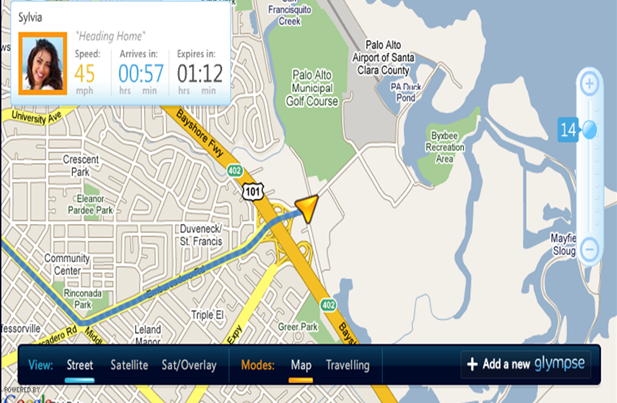
I’ve spent some time over the past few weeks talking to Glympse, a company that is today launching its flagship mobile local product. Or perhaps I should call it a mobile location tool. The app — available initially for G1 (Android) phones — notifies friends and family of a user’s location.
Other features track the user’s progress in reaching a given destination and/or estimated times of arrival. To skirt privacy concerns, users can identify who can see their locations and for what period of time (i.e., the next 30 minutes).
There will be lots of possible features and additional data sets that can build upon this foundation, and we’ll likely see those roll out over the coming months. Some of these will likely be commercial in nature. We’ll also see the application take more forms and be built for other devices/application marketplaces.
For now, it’s decided to go with Android for a few key reasons. One is the expected growth of the platform as it signs additional OEM and carrier deals over the next 12 months. But more importantly, according to CEO and ex-Microsoft developer Bryan Trussel, is the ability for users to have the application running “in the background.”
The iPhone, by comparison, only lets you run one app at a time, so closing the application to make a phone call or send a text loses its connectivity. Since this constant connectivity is a key part of the application itself (tracking someone’s geospatial “status”), this was a key criterion for going with Android. The Palm Pre will have this multi-app functionality, and we’ll likely see it built into future versions of the iPhone’s firmware (perhaps next month’s 3.0 release).
For now, it’s an intriguing (and free) app. Best of all, it doesn’t require any additional downloads on the part of the receiver. Glympse updates are sent via SMS with a link to open a mobile Web page where the sender’s status can be tracked. Though the sender will need the application installed (and to be an Android user), the lack of requirements of the receiver should lower some of the barriers to overall adoption.
Its reception should also be boosted by its timeliness. Status updates of where you are or what you’re doing are becoming the new standard units of social media (i.e., Twitter). This is especially true for social media apps that are migrating or germinating in the mobile environment (i.e., Latitude, Loopt). Glympse should strike that nerve and gain some traction among families, social circles, and some professional or enterprise uses.
Again, lots of monetization potential too, when it comes to additional data sets and location-based ad support, which will likely be integrated over time. This will evolve as the product itself does, and as users decide how and when to use it. This could take a direction of its own.


This Post Has 0 Comments